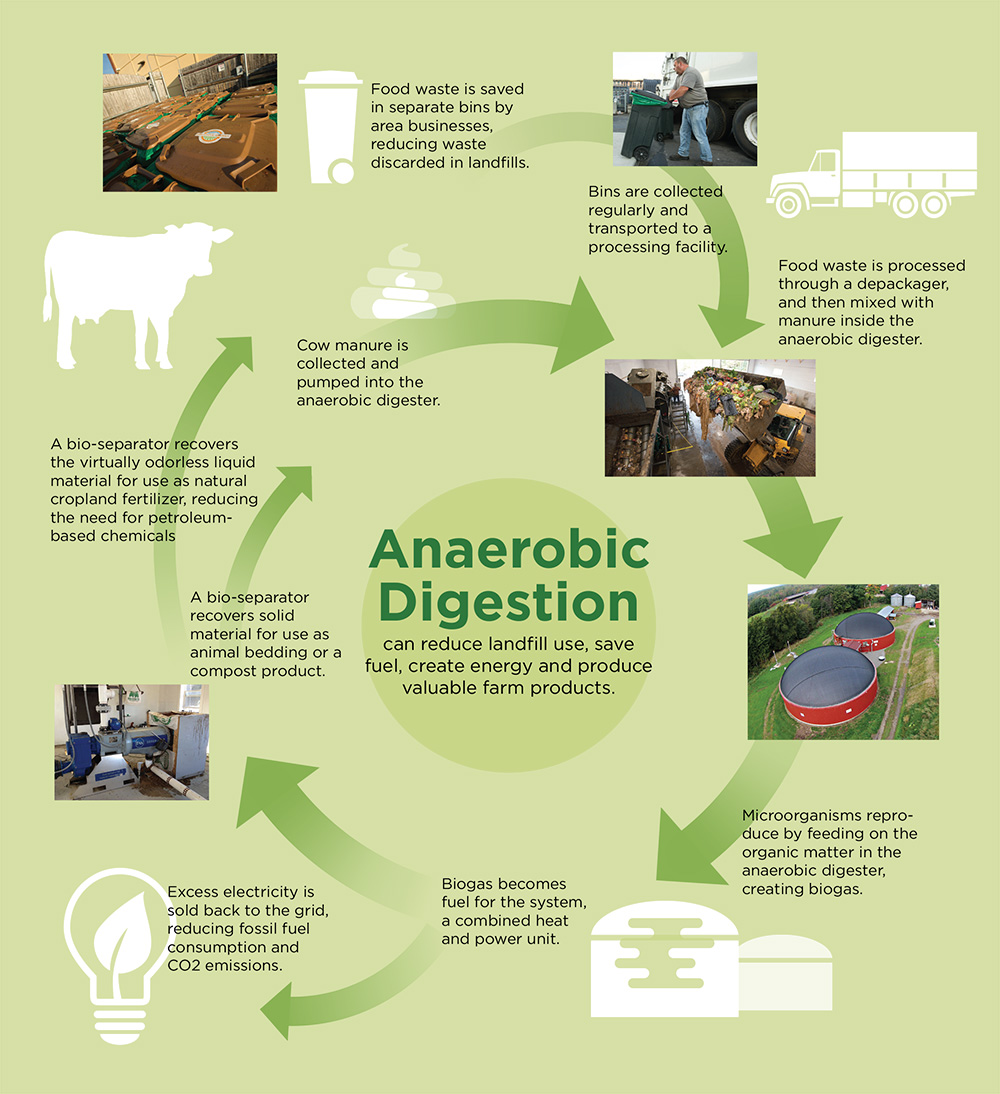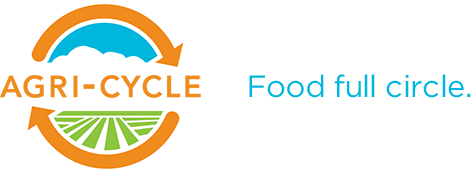When we explain how we turn a business’s food waste into biogas and recyclable products, sooner or later the “other” organic part of the process (besides the bacteria) comes into the picture: cows. “But why cows?” some might ask. In this blog we’re going to dive into the food waste recycling process and why cows are a part of that, as well as share a little science and history about cows and the critical part they play in the anaerobic digestion cycle.
 Understanding the Anaerobic Digestion Process
Understanding the Anaerobic Digestion Process
As you can see in the image above, anaerobic digestion (AD for short) is a cycle where organic waste products go in, and renewable products come out. Let’s guide you through one cycle of the process, starting with where we come in:
- Food Waste is collected from restaurants, grocers, brewers, and many others throughout New England. After consolidating we’ll make a tasty mixture called “slurry”. A combination of food waste and cow poop!
- The Anaerobic Digesters are fed this mixture, and the bacteria inside get to work. The process is similar to composting but captures both the biogas and waste heat of the process.
- Biogas and Heat are recovered from the process and used to create power, with the excess being sold back to the grid for more renewable power.
- Bio-separators take the remaining products and recover the liquid and solid components—known as digestate—and use them for fertilizer for crops and animal bedding (both for cows).
Check out the entire loop in our blog, Recycling Food Waste: How Our Anaerobic Digestion Facility Works.
But Why Are Cows Used with the Food Recycling Facilities?
As you may have noticed above, cows come into the AD process both at the beginning and the end—as a key part of our strategy to Bring Food Full Circle. This circle or cycle, which gives us our name, is also lovingly dubbed by some of us as the “Poop Loop” for the step the cows play in converting the digestate from the AD process into cow manure, which is then used to make the next batch of digestor slurry. It may sound disgusting, but it’s actually how we started as a company!
How Dairy Farms Are Part of Our Legacy
Agri-Cycle works with many processing partners in New England and the Mid-Atlantic, but it all started with Stonyvale Farm, a 5th generation dairy farm in Exeter, Maine, and Exeter Agri-Energy (EAE). EAE’s anaerobic digestion facility was created to address one of the major issues with the aging industry of dairy farms: cow manure. With that came Agri-Cycle; we provide food waste for the AD cycle as well as help create more sustainable solutions—not just for Stonyvale, but for all our business partners up and down the eastern seaboard!
We’re proud to have cows as part of a more sustainable future for businesses and to continue this process in AD facilities with our rapidly growing processing partners and service area expansion. We continue to focus on helping businesses (and cities) throughout the northeast—from Maine to Maryland—find better ways of dealing with and reducing their food waste. Contact us to take your food full cycle by getting a quote or calling us at 1-800-850-9560.

